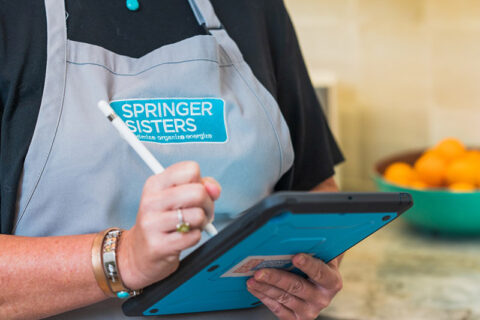5 Steps to Decluttering

Decluttering is the foundation to a well-organized home. If you are ready to declutter and stay clutter-free, follow these 5 steps:
- Start with the unemotional. Organizing is similar to building muscle. The more you practice it, the better you become. You wouldn’t start your running career at the start line of a marathon. The same goes for organizing. Start in areas of the home that are the least emotional. This varies but is generally bathrooms, garages, and kitchens. You don’t want to dive into tough decisions right out of the gate.
- Categorize your items. Pick an area to declutter and categorize the items. Put all like items together. You can use empty bins, areas of the room, re-useable shopping bags, or whatever you have at your disposal. If you know you have like items in other areas of the home, bring them into the category. Have a donate bag and trash bag. Remove both trash and donate from the room at the end of your work session.
- Assess your categories. Easiest items to discard are broken items or those missing parts. If you plan on having an item repaired, set a deadline by which to do so. If you don’t meet your deadline, discard the item. After categorizing, did you find any areas of excess? Do you own 12 pairs of scissors, 3 food processors, 16 extension cords? Be honest with yourself on how many you actually need. Are there any items that you don’t use? Consider donating them. There are numerous local charities that can benefit from your clutter. Items that were never used in your home can have a new life and be used to their full potential elsewhere.
- Establish purposeful places. Areas of the home that don’t have an established purpose become dumping grounds for clutter. One of the definitions of clutter is delayed decisions. Don’t fall into the “I’ll just put this down here” trap. Once you remove unwanted, unneeded, and unused items from your decluttered area, define your spaces. These defined spaces allow you to not have random items floating around the home and easy visuals to know what you own. You won’t buy more mayonnaise if you can see where it goes or another screwdriver because you can’t remember where you put it last.
- Establish boundaries. To prevent having to repeat the decluttering process on a grand scale, establish boundaries. Boundaries come in different forms: quantities – decide an amount and stick to it, physical boundaries – bins, baskets, containers, etc., timeframes – decide a date to use items and stick to it. Having established boundaries prevents impulse shopping and repeat purchases from not knowing what you own.
Decluttering is an ongoing process. Don’t be frustrated with your journey, your decluttering muscles are getting stronger. Decisions will become easier. Take a break if you need to. Ask for help if you need it. Be tough on yourself, be honest with what you need and use. A life with less clutter is a life less stressed. Value people over things. You are worth it; you can do it and Springer Sisters are here to help.

